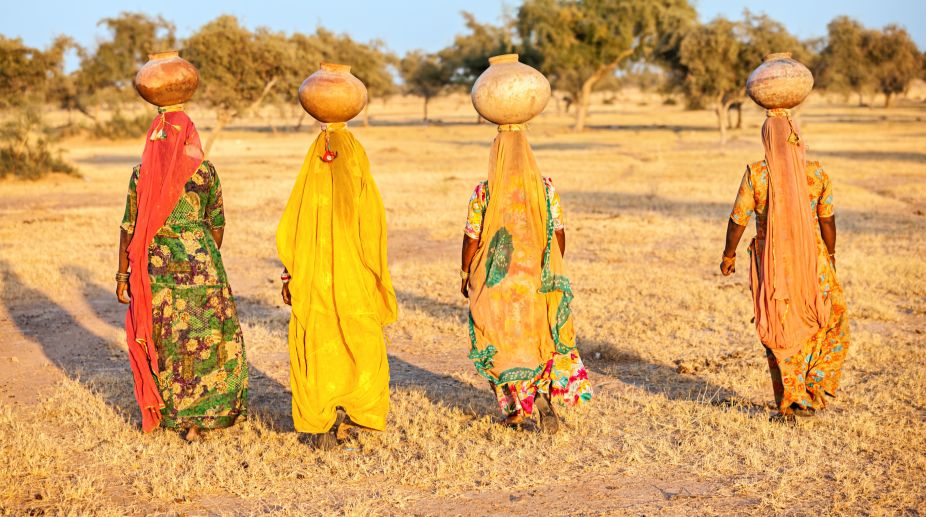India is experiencing an acute water crisis. Over the last two decades, this crisis has caused widespread agrarian distress, disrupted the rural economy, and rendered countless farmers distraught, leading a number into suicide.
The water crisis has its roots in extensive deforestation, proliferation of bore wells, rampant urbanisation, and unplanned development, which has wreaked havoc with the hydrological cycle, leading to the deterioration of many rivers.
As per the World Resources Institute, 54 per cent of India faces extremely high water stress. India’s groundwater depletion is one of the worst in the world. It is disheartening to see the deteriorating state of rivers in India, a civilization that reveres its water bodies and holds the virtue of sustenance in the highest regard.
Various water bodies across India, especially in the states of Maharashtra and Karnataka, have dried up owing to the disturbed hydrological cycle, the release of untreated effluents and unsustainable water use patterns.
The holy river Ganga, which many in India refer to as ‘Ganga Maa’ or ‘Mother Ganga’, has been among the top priorities of Prime Minister Narendra Modi since his election in 2014. The Ministry of Water Resources, River Development & Ganga Rejuvenation is responsible for overseeing the clean-up of the river.
Namami Gange was approved as a flagship programme by the union government in june 2014. With a budget outlay of Rs.20,000 crore, it was to accomplish effective abatement of pollution, conservation and rejuvenation of the river Ganga.
Despite the major steps and a strong government focus on cleaning up the Ganga, we are yet to see results. As per a recent report of the Central Pollution Control Board, Ganga receives 3,048 million litres of waste water per day. Disposal of industrial and domestic sewage effluent, directly by drains or indirectly through tributaries, has been the chief cause for the high levels of pollution.
The newly appointed Chief Minister of Uttar Pradesh, Yogi Adityanath, recently met the Union Minister for Water Resources, River Development and Ganga Rejuvenation, Uma Bharti, to discuss the required cooperation for Ganga rejuvenation.
Adityanath indicated that the state would take up necessary action to speed up the work, saying that since the largest stretch of the river passes through Uttar Pradesh, it is the responsibility of the state to clean up the river. A recent ruling by the Uttarakhand high court recognised rivers Ganga and Yamuna as living legal entities.
Although the ruling may encounter operational challenges, it is being hailed as a much required precedent in India. Environmentalists believe that since the ruling resonates with the civilisational ethos of the land, it will lay the foundation of responsible environmental reforms and engage the community.
The coming to power of new governments in Uttar Pradesh and Uttarakhand, coupled with this recent ruling, should reinvigorate India’s hopes of reviving its water bodies. However, before grand projects are completed and big promises are fulfilled, small steps need to be undertaken immediately.
River rejuvenation offers a sustainable solution to many of India's water problems but requires technical planning, community engagement, grass-roots leadership, efficient project management and responsible social audit for feedback.
The current government structures lack the required integration to address the problem of ‘dying rivers’ as each department works in isolation, necessitating a nodal agency through which all schemes can be implemented in tandem.
This creates room for civil society to step in. Various civil society organizations are already working for this cause by acting as the required nodal agencies and providing services that make it possible for the government to undertake river rejuvenation projects.
Dr. Lingaraju Yale (a renowned geologist and member of the National Committee on Integrated Mission for Sustainable Development, Indian Space Research Organization) has developed a scientific methodology that is being used in some of the ongoing river rejuvenation projects with active involvement of civil society organisations.
These projects are based on a river basin framework. Remote sensing and geographic information systems (GIS) are used to analyse information relating to geology, geomorphology, lithology, lineaments, soil type and drainage network, and detailed action plans are accordingly designed.
Various civil society agencies and government departments come together to conduct capacity building and training programs for various stakeholders, and to ensure proper implementation. These projects are unique on the social front as well. They create community leaders and 'barefoot technicians' who act as trustworthy channels for last-mile delivery.
One such project has been selected for a national award by the Ministry of Rural Development (MoRD), Govt. of India, and has been recommended as a national model. This project was implemented under the Mahatma Gandhi National Rural Employment Guarantee Act, 2005 (MGNREGA), in partnership with the central government, state government and civil society organizations.
The project spans 5,500 square kilometres of watershed, covering three districts and 1097 villages. In a span of just two years, 6.8 lakh+ man days have been generated, 28000+ people have benefited by employment under MGNREGA, 4500+ have been trained on water conservation, and 1000+ farmers have been enrolled as members of the Farmer Producers Organisation.
Representatives from a civil society organization say that the core belief is to transform individuals and communities into ‘agents of change’, and effectively work with all key stakeholders, including the government, to catalyse a silent grassroots movement.
The writers are, respectively, Professor of Law, Jindal Global University, Sonipat and Co-Founder and Program Director, Vision India Foundation.











